Archaeolgy of Great Aycliffe |
12/13th Century Finds from the Great Aycliffe Area The finds have legally been declared to the Finds Liaison Officer at Durham |
|
.jpg) |
.jpg) |
| 13th century buckle/strap end | Reverse of 13th century buckle/strap end |
.jpg) |
|
| A pot mend, 12th or 13th century | |
Finds made by Nick Martin All photographs and text remain the copyright of Nick Martin |
|
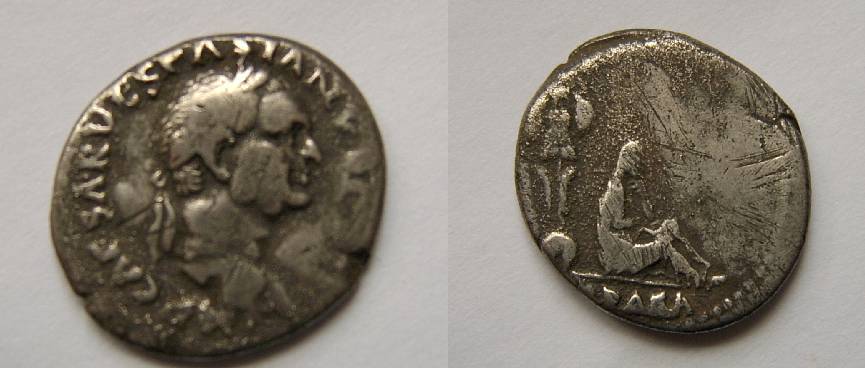 |
This is a silver denarii of Emperor Vespasian (A.D. 69-79) and was found at Great Stainton. Records show that the name of the village derives from a Roman place name and other Roman coins have been found in the 1800s by gravediggers at the church. It is a high value coin, so I presume the village must have seen some level of trade in the past owing to the fact that its situated on a Roman road. |
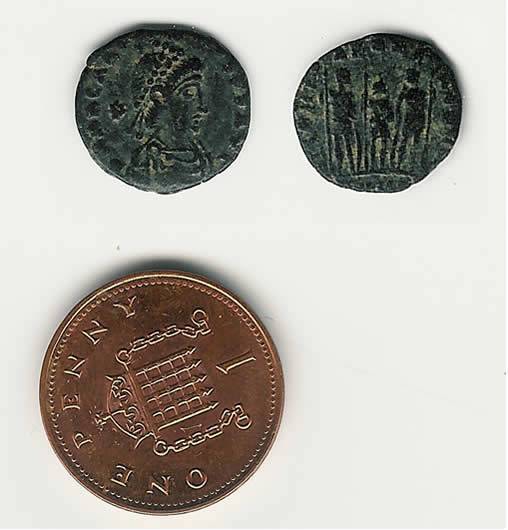 |
This is a bronze Roman coin, and I think it is of the Emperor Constantine (A.D. 285-337). Also found at Great Stainton, once again re-inforcing the theory that the village was once a Roman settlement or trading post. |
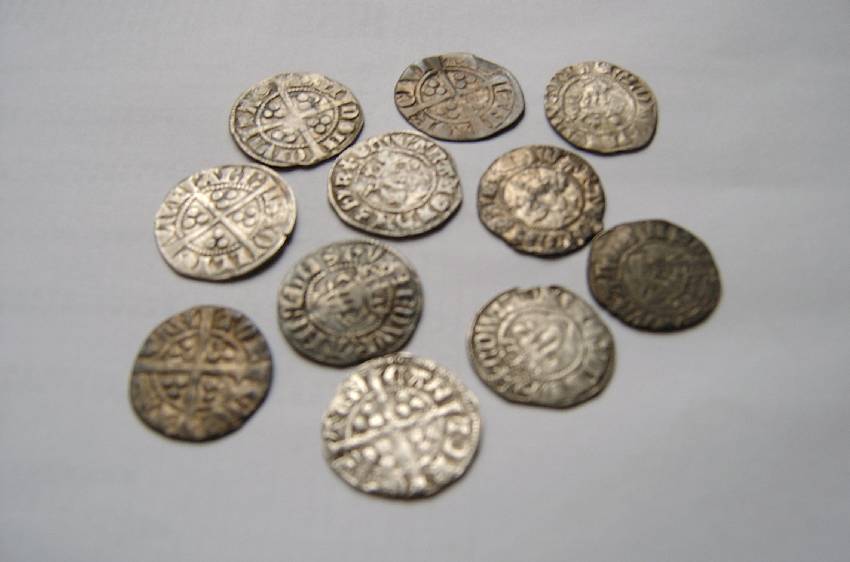 |
This batch of 11 medieval hammered silver coins were found very close to each other at Woodham Village ( the old medieval DMV site ). According to the records, the village was burnt to the ground by marauding Scots at some distant period and I have been informed by experts that some of these coins exhibit scorch marks. Silver does tarnish over time, but there is a clear distinction between silver that has been subjected to heat and silver that has simply been tarnished over a long period of time. I also found two molten silver coins nearby which can only have occurred with intense heat, and I believe that this helps to verify the accounts of the village being burnt and attacked |
 |
This is a fragment of a Saxon cruciform brooch and enough survives to see how it would have looked complete. It is made of bronze and is really quite solid. It was found at old Woodham Village, and this demonstrates that it was indeed a Saxon settlement prior to becoming a medieval village. |
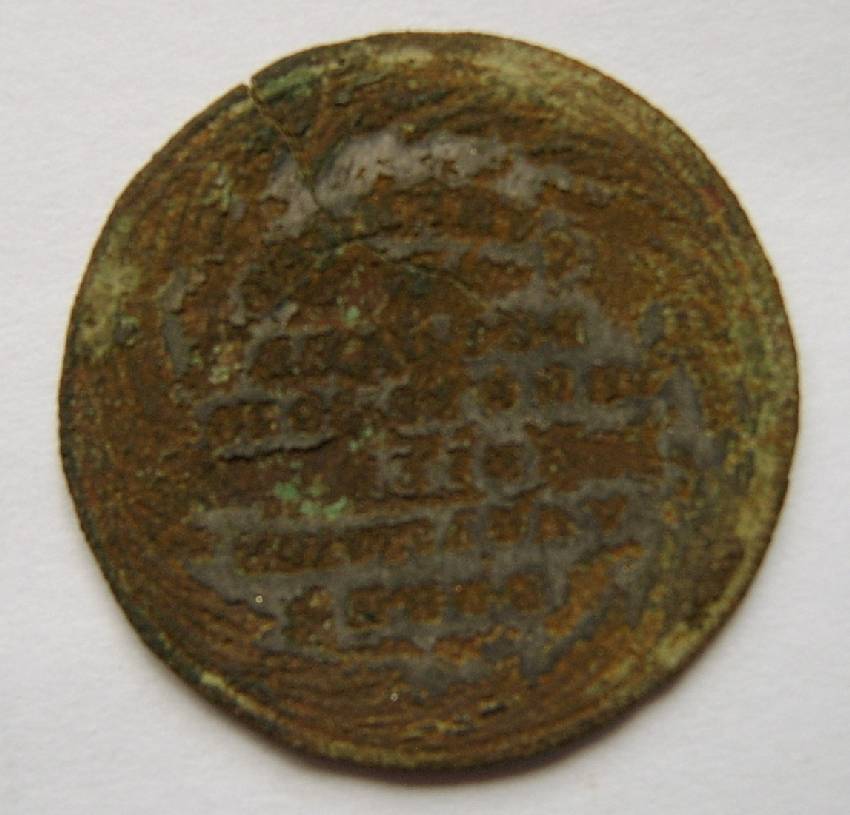 |
A commemorative base metal medal that was issued upon the death of an English monarch. I was told who this was, but sadly the medal has deteriorated since being lifted from the soil and is not really readable anymore. From memory, I think it dated from the 1700s and this was also found at old Woodham Village. |
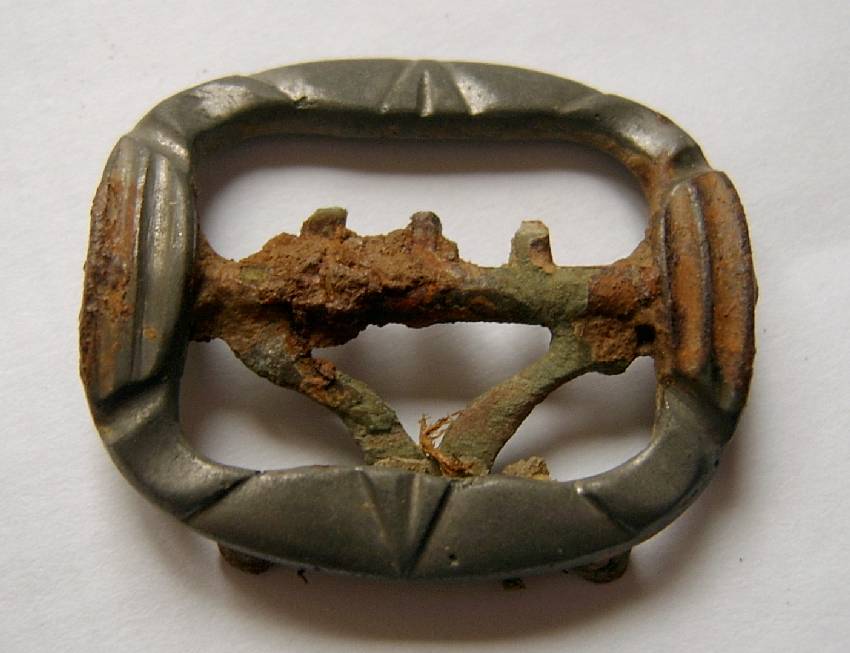 |
A really nice and almost complete pewter buckle, found at old Woodham Village. It dates from the late 1600s/ early 1700s from the information that I received at the time of finding the item. It probably came off a gentleman's shoe. |
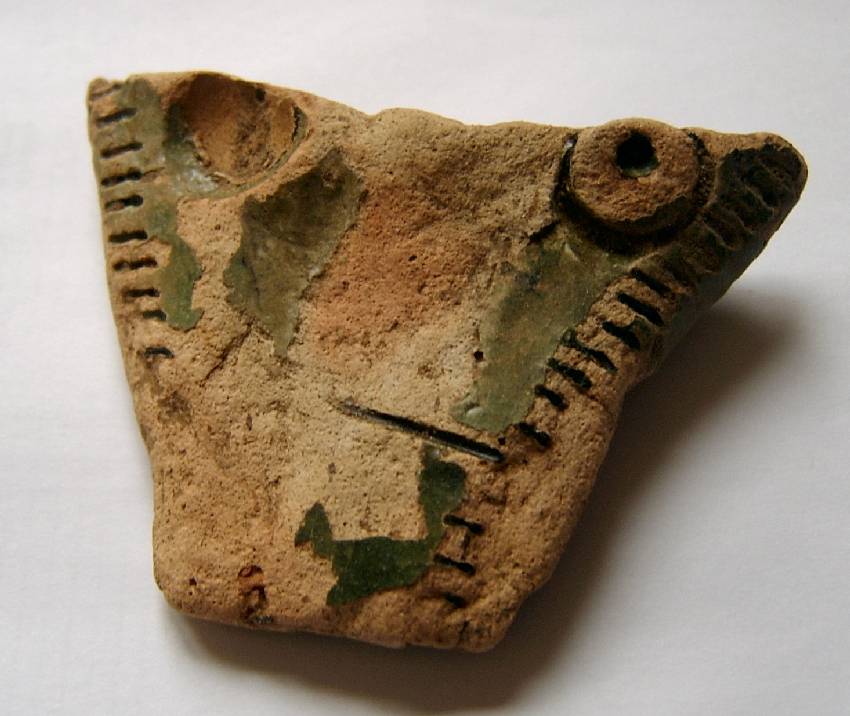 |
A nice large fragment of early medieval pottery, found once again at old Woodham Village. It is hard to tell from what remains, but I am confident that it used to depict a stylised animal head and still has remains of medieval green glaze on it. |
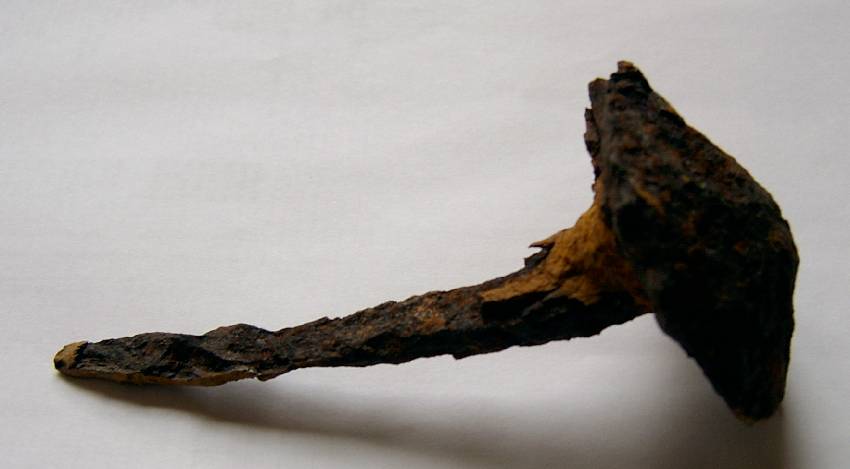 |
This is a large Roman iron nail. Not all that significant really other than the fact that it was found at Shackleton Beacon Hill Fort in Redworth. Records suppose that this site is a iron age fort, and this could well be correct. The fact that a large Roman nail was found ( along with many more fragmented ones ) shows that some form of timber buildings were present at the base of the fort in antiquity. |
As for old Aycliffe Village, did you know that part of a Saxon cemetery exists in the village itself and lies beneath the car park of the "County" pub? |
A large Civil War hoard of silver coins were found adjacent to School Aycliffe lane approximately five years ago suggesting that they were buried in time of danger, quite probably by inhabitants of nearby Heighington.
|